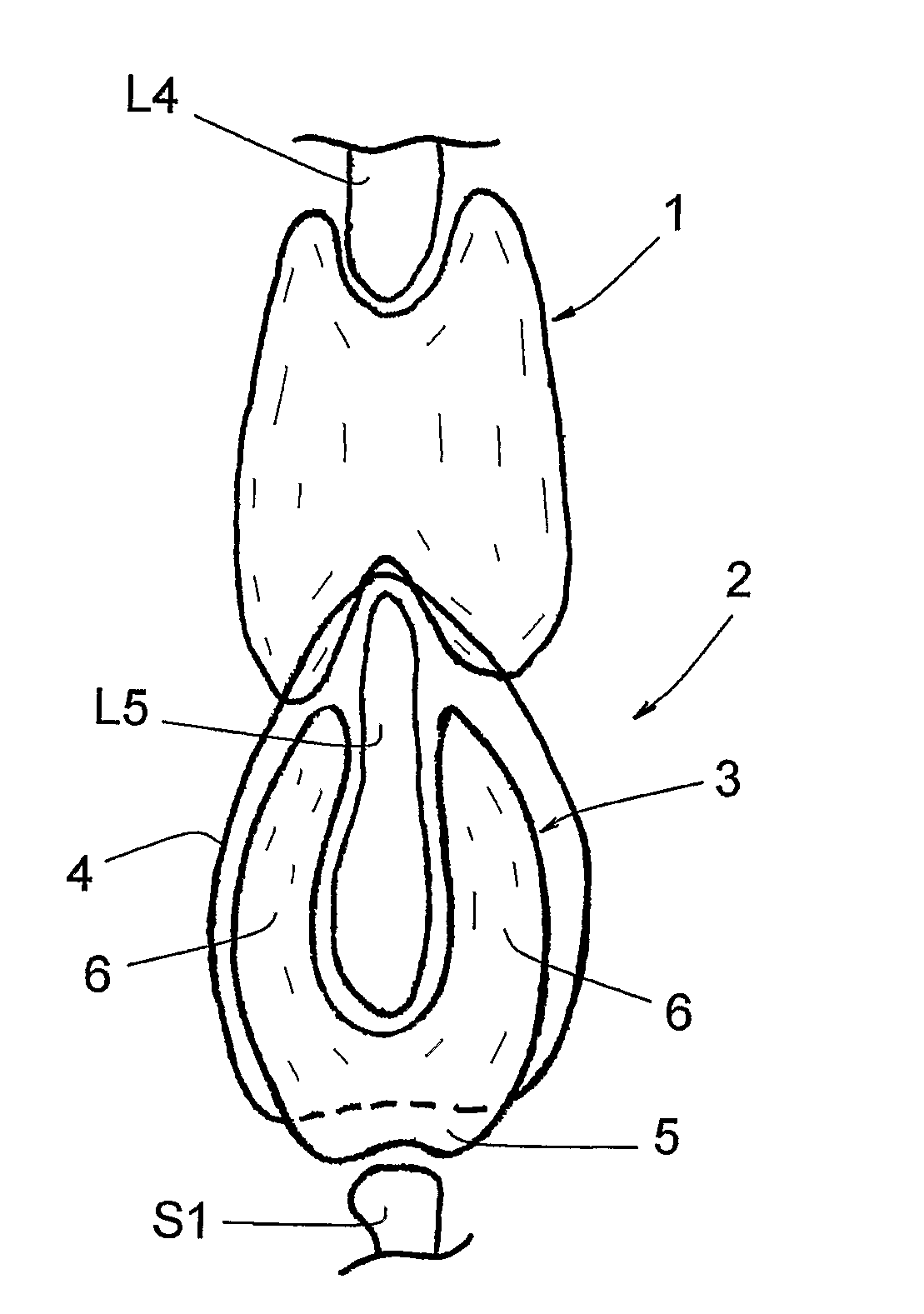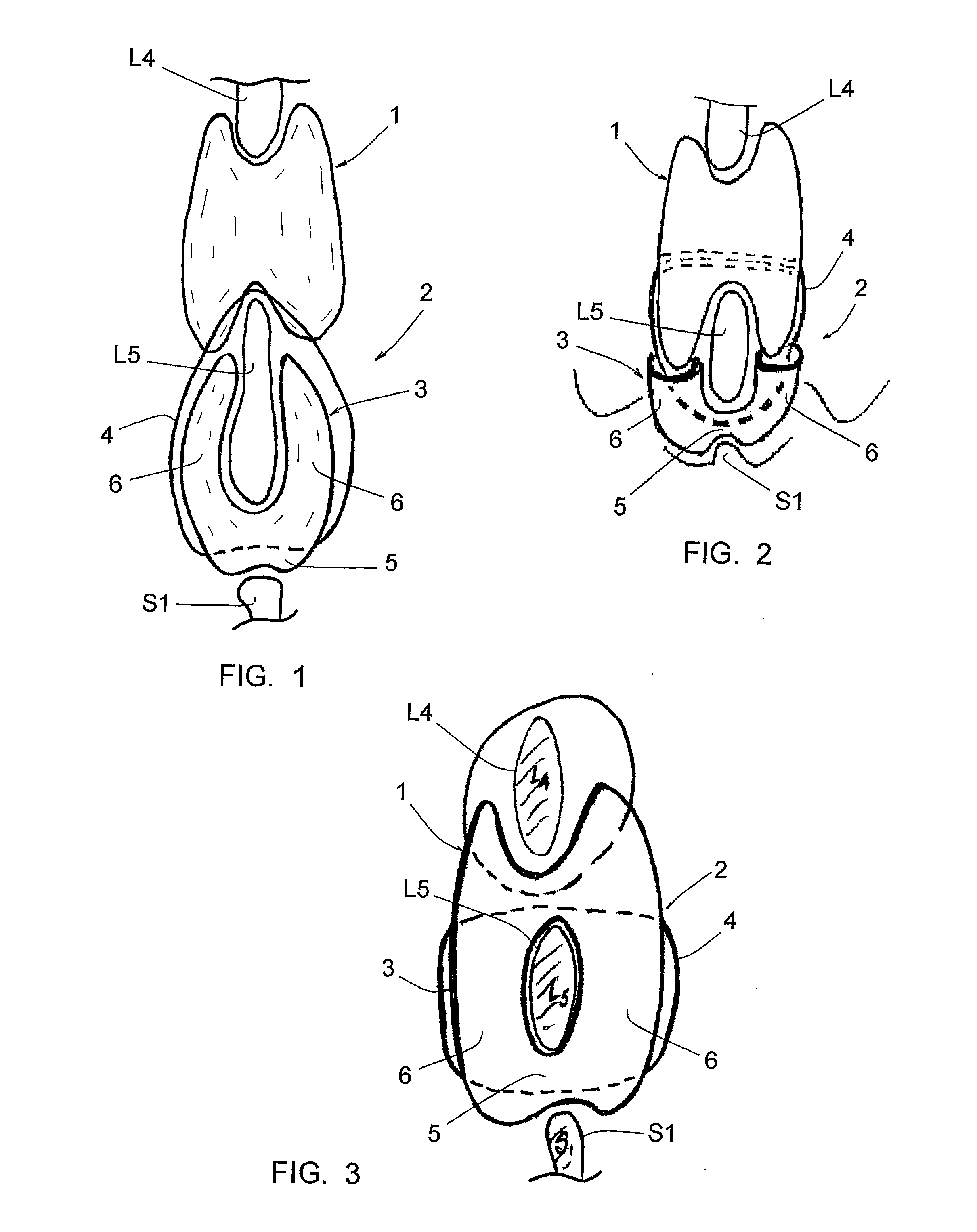Interspinous spinal prosthesis
a spinal prosthesis and interspinal nerve technology, applied in the field of interspinal nerve prosthesis, can solve the problems of unsatisfactory mechanically and delicate solutions, and achieve the effect of variable stiffness
- Summary
- Abstract
- Description
- Claims
- Application Information
AI Technical Summary
Benefits of technology
Problems solved by technology
Method used
Image
Examples
Embodiment Construction
[0027]FIG. 1, annexed, shows three successive spinous processes, generally L4, L5 and S1. Between the L4 and L5 spinous processes is placed an interspinous implant 1, in particular that known under the name “DIAM”.
[0028]The prosthesis 2 according to the invention comprises an implant 3 and a link 4.
[0029]The implant 3 has a U-shape, meaning it comprises an intermediate portion 5 and two side portions 6. At least the intermediate portion 5 is shock absorbing. This implant 3 is intended to envelope the spinous process of L5, said intermediate portion 5 being intended to be engaged between this spinous process and the S1 spinous process.
[0030]The link 4 goes through said intermediate portion 5 and forms two side strands which can go alongside said side portions 6 and be connected to each other so as to closely stick said intermediate portion 5 against the lower edge of the L5 spinous process.
[0031]FIG. 2 shows a variation of this embodiment wherein the free ends of the side portions 6 ...
PUM
 Login to View More
Login to View More Abstract
Description
Claims
Application Information
 Login to View More
Login to View More - R&D
- Intellectual Property
- Life Sciences
- Materials
- Tech Scout
- Unparalleled Data Quality
- Higher Quality Content
- 60% Fewer Hallucinations
Browse by: Latest US Patents, China's latest patents, Technical Efficacy Thesaurus, Application Domain, Technology Topic, Popular Technical Reports.
© 2025 PatSnap. All rights reserved.Legal|Privacy policy|Modern Slavery Act Transparency Statement|Sitemap|About US| Contact US: help@patsnap.com


